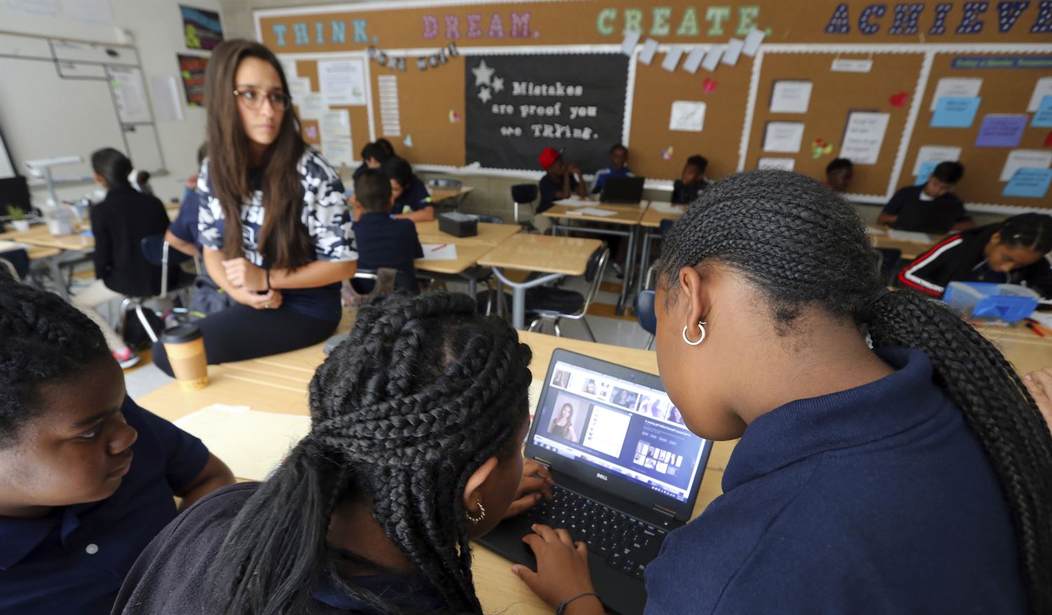Last week the Missouri legislature passed an enormous bill that contains a laundry list of changes to public education in the state. Among those changes is the provision that, if citizens, teachers, or parents are so inclined to start one, a charter school may open in Boone County without the approval of the school board.
When the bill was debated on the House floor, opponents shouted “Poison!” and claimed that it would end public schooling as we know it in the Columbia 93 school district (CPS 93). Their biggest concern is that allowing a charter school to open would divert significant state and local education dollars to a duplicate school system that hasn’t been shown to be any better than the one already in place. Let’s break that down a bit.
Opponents made seemingly contradictory claims. On one hand, because of the high performance of the schools in CPS 93 there is no good reason for students there to leave. But on the other, charter schools would draw hundreds of students away from their existing public schools.
So, does Boone County need a charter school? Last year, just 22 percent of low-income students in CPS 93 scored proficient or higher on the state English/Language Arts test, and a dismal 16 percent did so in math. The parents of low-income students in CPS 93 may want a different option. Last year, CPS 93 had a high school graduation rate of 87.5 percent, but according to DESE data, just 62.5 percent of those graduates could be considered college or career-ready. And that’s in the same town as the state’s flagship university.
Even if we don’t see the need for a charter school, what about those who want one? Charter schools have been around for over 30 years, and they come in hundreds of different forms. There are currently 8,000 of them serving almost 4 million students. They are public schools with public school teachers. Charter-school curricula can be loosely categorized as STEM (science, technology, engineering, and math), STEAM (STEM plus arts), language immersion, Classical, CTE (career and technical education), culturally focused, or civics focused, to name a few. Alternatively, charter school models can be classified by the instruction model into categories such as personalized learning, high expectations, project-based learning, dual college enrollment, Montessori, Waldorf, or expeditionary learning. Now, imagine the matrix of curricula and instruction models, and you’ll begin to see the possibilities for a new school in Boone County. Until now charter schools in Missouri were used as lifelines for students in unaccredited districts. At last, a district in Missouri will have the opportunity to have charter schools as an addition to their portfolio.
Would a charter school take students from an existing CPS 93 public school? Maybe. It depends on the type of charter school. There are dozens of charter schools whose specific mission is to serve students who have dropped out of the system before they received a high school diploma. Columbia has students like that, but right now, they aren’t being served. There are also incredibly high-performing charter high schools, like the Signature School in Evansville, Indiana, or the BASIS schools in Arizona, that rank in the top 10 of all high schools in the nation. They focus on college-level coursework in high school, and 100 percent of the students in those high schools leave college-ready. A high school like this in Columbia might actually attract families, and their local dollars, to the district. Without knowing if or what type of charter school might open, it’s a bold claim to say that it would prompt a mass exodus from traditional public schools.
Would a charter school take money from the Columbia 93 Public School District? Eventually. It must be pointed out that for public schools in Missouri, losing students doesn’t necessarily equate to losing money—at least not for a few years. Missouri has the most generous declining-enrollment revenue protections of any state in the country. For purposes of determining state funding, districts can use the highest student counts of the prior three school years (actually, it’s currently four years because of COVID). If students were to leave like rats from a sinking ship, as opponents of charter schools claim they will, CPS 93 would continue to receive state funding for those students for three years while they adjust their finances.
Is it fair to single out Boone County from the rest of the state? Ideally, every county would have the opportunity to have a charter school. Parent support for charter schools, and for having one in their neighborhood, is generally upwards of 75 percent. Many of the highest-performing charter school networks in the U.S. were started by entrepreneurial teachers. I believe that such teachers exist in every community in the state. So Boone County has an opportunity to be the first example of what I hope will be a trend to give all Missouri students access to charter schools.
I’m unaware of any current plans to spring a charter school on Boone County. The application process is exhaustive, for good reason, and usually takes years. That is plenty of time for folks in Columbia to wrap their heads around the idea. Nationally, half of all charter schools are, in fact, sponsored by local school boards. Districts have collaborated with charter schools around items like student transportation or special education services. They need not be the enemy. Rather, they can provide unique programs that parents want to augment the district.
Susan Pendergrass is the director of education policy at the Show-Me Institute.
RELATED:
Missouri's Primary Results Show School Choice Is a Clear Winner
Charter Schools Strike Back Against the Biden Administration













Join the conversation as a VIP Member